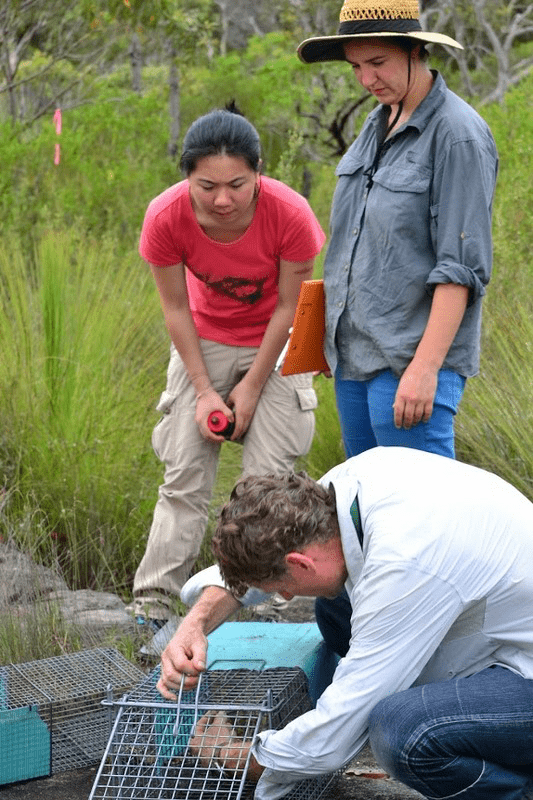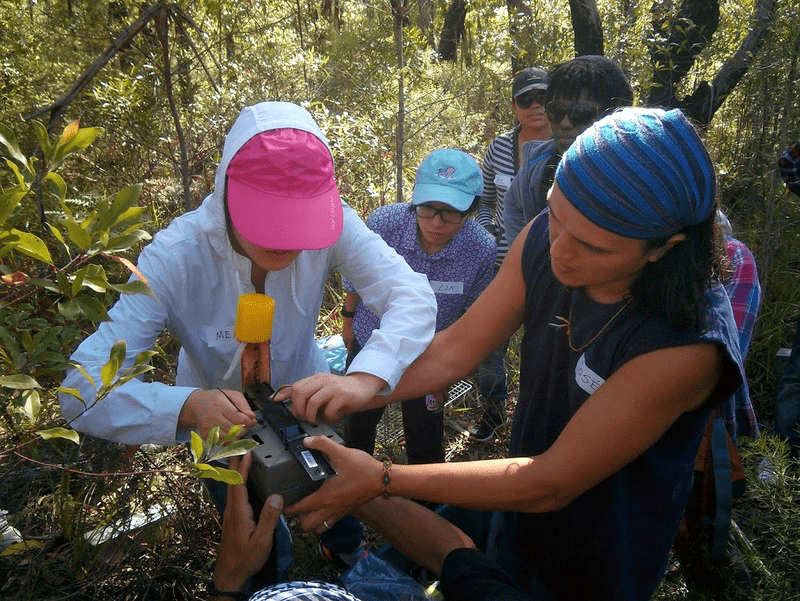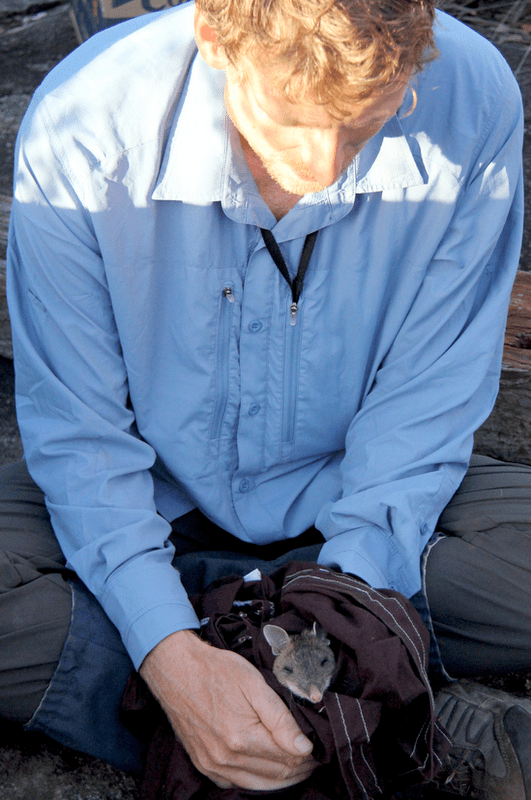Phil Gibbons releasing a long-nosed bandicoot (right) at a Long Term Ecological Research Network (LTERN) monitoring site in Booderee National Park
A senior ANU researcher is using TERN’s long-term ecosystem observation sites to inspire students
Dr Phil Gibbons of ANU’s Fenner School of Environment and Society is a big believer in field-based learning. Both of the undergraduate courses Phil convenes incorporate field trips, which he believes are invaluable not just for demonstrating lecture-theatre theory, but also for educating, inspiring and motivating our next generation of environmental professionals.
And it’s not only Phil who sees great value in field-based learning: judging by a student-maintained course blog, his students love it too.
‘We learn complex skills best by doing them, while observing expert practitioners and sharing knowledge with our peers,’ writes Alison Tandy, one of Phil’s students, in the blog.
Phil takes third year and postgraduate students studying his biodiversity conservation course to Booderee National Park, in Jervis Bay territory on the south coast of New South Wales, where they conduct field work at TERN’s long-term ecosystem monitoring sites. Students collect plant and animal data from a subset of sites established by David Lindenmayer, of TERN’s Long Term Ecological Research Network (LTERN), and ANU’s Chris Macgregor, who has worked on long-term monitoring in Booderee National Park for a decade.
‘We trap or photograph approximately 100 animals each trip, giving most students – whether from Australia or overseas – their first hands-on experience of Australian animals,’ says Phil.

Phil Gibbons and a couple of his students baiting a cage trap (left) and releasing a long-nosed bandicoot (right) at a Long Term Ecological Research Network (LTERN) monitoring site in Booderee National Park
But it’s much more than just giving students practical experience with our cute, cuddly critters. To understand why they are collecting the data and how it will be used, students are taught about the long-term research happening at the site and its importance for national and international ecosystem studies.
Students are also taught the same field data-sampling techniques as those used by TERN researchers at the site, enabling the students to play a role much greater than simply collecting data needed for their studies.
Using standard methods on long-term monitoring sites means that the data the students collect can be added to the site’s data compendium. The more appropriately collected data researchers have, the greater their capacity is to understand the complex ecological processes occurring there.
Phil says that the students really value this connection to ‘real life’ research and are eager to make a contribution.
‘Students love the fact that they can contribute to long-term monitoring and research that informs management of the park and fire ecology generally,’ says Phil.
Phil’s blog-writing students couldn’t agree more.
‘Field trips offer students studying the environment a rare opportunity to put our theoretical knowledge into practice; an opportunity for which we are all grateful. Yet it is not often that the knowledge created in our practice has immediate application for real-world conservation efforts. In a world where we are increasingly aware of the immediacy of biodiversity decline, this can be frustrating. Any opportunity to contribute to current biodiversity research and management has incredible value that extends beyond our own student learning,’ writes Alison.
We here are TERN are delighted to know that our research infrastructure is playing a role in educating and inspiring our future ecosystem scientists. We hope that one day these students will be collaborating with TERN alongside researchers like Phil, or leading field expeditions of their own students, building on knowledge that they helped create as undergraduates.

Students set-up at remote camera trap at a Long Term Ecological Research Network (LTERN) monitoring site in Booderee National Park.
Are you a TERN user? Would you like to tell your story? If so, then contact Mark Grant to discuss opportunities
Published in TERN newsletter September 2014







